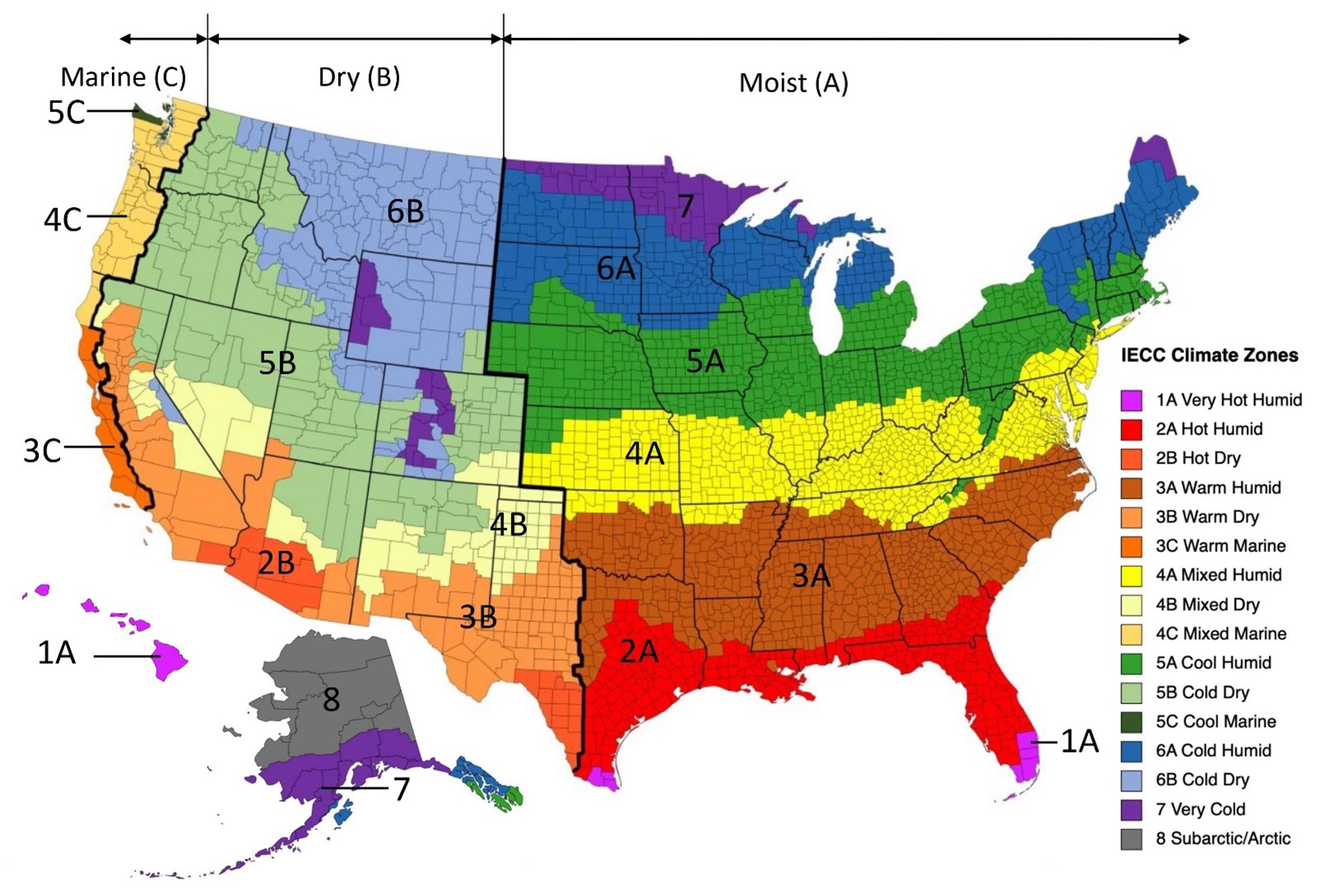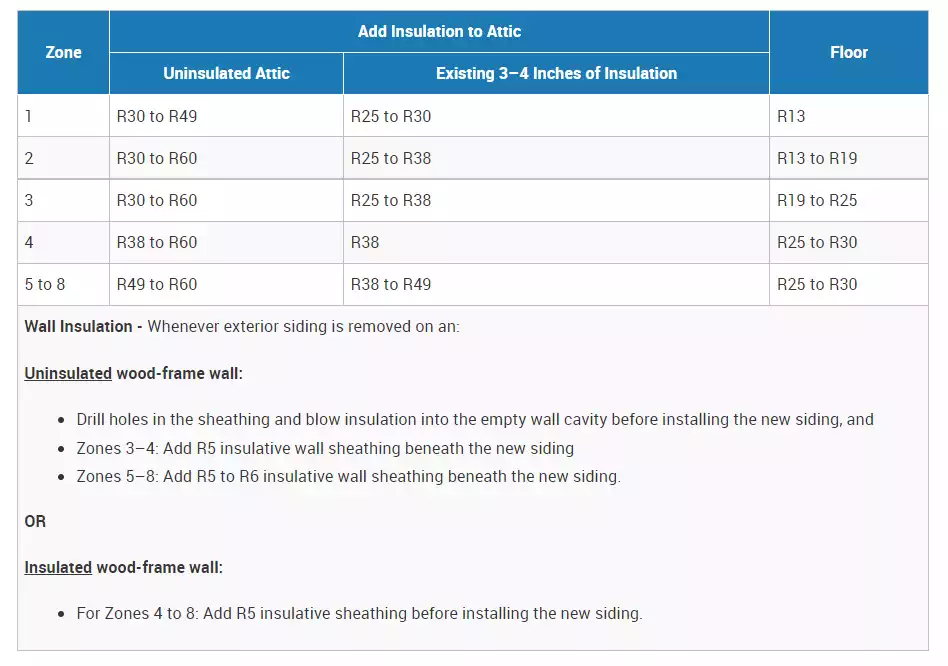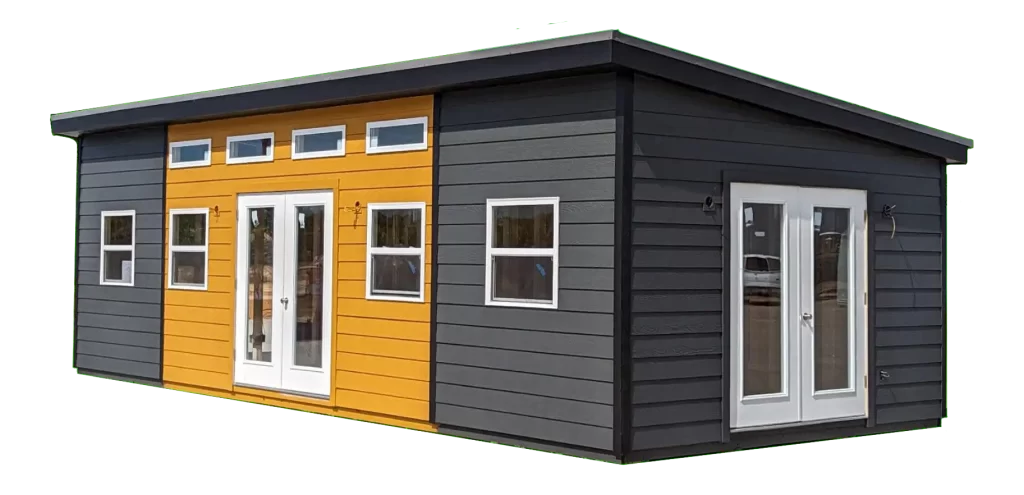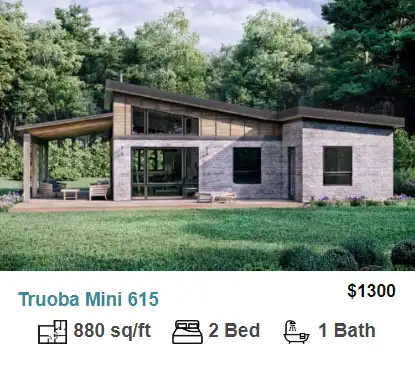One of the most important construction decisions you can make for your tiny home is how it will be insulated. Cutting corners here will cost you exponentially more in the long run due to increased heating and cooling costs. Let’s look at the best options for insulating your tiny home.
R Value
R value is a measurement of how resistant a material is to transferring heat. Many people are confused to learn that insulation doesn’t actually keep the heat from your heater in, or the cold from your AC for that matter. Insulation’s only job is to slow the transfer of heat from where we want it to where we don’t. In the summertime, your insulation is not preventing your cold air from escaping, but rather resisting the natural transfer of heat from outside to inside. For a deeper explanation of R Value, check out the Wikipedia page here.
Since we learned in grade school science that heat rises, it follows that most loss of heat in the home is through the ceiling. For this reason, ceilings and attics are often insulated with up to three times the R value as walls.
Insulation Needs by Climate Region
As you may have guessed, R value required in Alaska is much different that what is required in Texas. As with most things, there is no one size fits all solution. Instead we must look at what is best for our region. The climate zone chart from the Department of Energy shown below is an excellent reference for determining an R value range for your tiny home. Depending on your location, you may also be subject to state and local code that dictates a minimum R value.


Sealing Your Tiny Home
Great! Now we can start insulating right? Well…almost. The first thing we need to address is sealing your home. Stuffing a bunch of insulation in the walls without sealing first is likely to result in a drafty, moldy home. A well-sealed home with average insulation will actually perform much better than an unsealed home with overkill insulation.
The professional way to seal your home is to perform a blower door test. A blower door test, which depressurizes a home, can reveal the location of many leaks. In order to get the home sealed well without a blower door test, we need to focus on the common areas for leaks. These include wall/floor/ceiling junctions, doors, windows, and outlets. Be liberal with your application of caulk to small gaps and expanding foam for any large gaps. Hanging sheet plastic between your stud faces and wall cladding is an awfully cheap and easy insurance policy that can pay big dividends. If you have the option, installing house wrap (Tyvek is a popular choice) under your exterior cladding can save you a ton of leaks down the road.
Choosing the Best Insulation for Your Tiny Home
Two important questions all tiny homers must ask themselves regarding insulation are:
- Can I do it myself?
- What is my budget?
When it comes to insulation some options are objectively better than others, but people don’t choose them because of price or the need to hire someone to install it. It comes down to how much money you can spend on your insulation…now, and over the long haul.
The important thing to know is that insulation pays for itself in the long term. This is a widely understood and agreed upon fact, but the prices of the cheaper options can be very tempting when you are on a tight budget. Taking into account today’s material prices, the difference between average insulation and the best insulation is around $2000. Making that investment now will save you about 30% each month for the rest of your life. That puts your break even point at about three and a half years, and it’s all money in your pocket after that. The old adage “Buy once cry once.” Applies perfectly here.
Closed Cell Foam, the Best Option for Tiny Homes
Closed cell foam is the obvious winner if price is no factor. Closed cell foam is made up of cells that are completely closed. The cells seal together, so air and moisture are unable to get inside the foam. It has an R value of 7.0 per inch thick and acts as a moisture and air sealant. Closed cell foam has a density of nearly two pounds per cubic foot, over triple that of open cell foam. This is the Cadillac option and will allow you to heat and cool your home for pennies on the dollar compared to some other options. Closed cell foam is appropriate in walls, ceilings, and especially on the underside of your tiny home.
Is Open Cell Foam Right for My Tiny Home?
Open cell foam is comprised of cells that are deliberately left open. This yields a much less dense and much more flexible material than closed cell. One benefit of open cell foam is its increased expansion which allows it to fill up small nooks and crannies for a great seal. This increased expansion also makes open cell foam insulation great for soundproofing as you can completely fill the space between studs in one application. The added expansion comes at the cost of lower density. The lower density means that open cell offers only half of the r value per inch of thickness as closed cell. Open cell foam can be used in walls and ceilings, but it is not a great option for underside insulation because it absorbs and releases moisture too freely.
Is Fiberglass Batt Insulation Good Enough for My Tiny Home?
Fiberglass batt insulation consists of stud thickness matts of fiberglass strands with a paper backing for easy installation across studs. It is by far the cheapest and most common for of home insulation. Despite being economical and easy to install, fiberglass batt insulation has several big drawbacks. It only has an R value of about 3.1 per inch of thickness and offers little benefit to air leaks and none to moisture leaks. This is the choice if you are on a super tight budget and it is appropriate in walls and ceilings.
Rockwool Insulation, the Hidden Gem of Tiny Home Insulation?
Rockwool, AKA mineral wool, is another great option for insulating your tiny home. It is inherently impervious to moisture, so it won’t break down due to a leak or condensation. Rock wool has a semi-rigid consistency which keep is firmly upright between your studs rather than slowly collapsing on itself over time as fiberglass can. Rockwool is a great acoustic dampener and is even a fire barrier! At an added cost of only about $300 for an average sized tiny home, it is well worth considering this upgrade.
Rigid Foam Board, A Great Option for the Underside of Your Tiny Home
While not typically used in walls and ceilings, rigid foam board is a great option for the underside of your tiny home. Rigid foam board has a couple advantages for underside insulation. All varieties are moisture resistant. It is also relatively easy to work with if you are crawling underneath your tiny home to insulate it. It comes in several varieties with different R values.
- Extruded Polystyrene Foam Insulation (XPS) – You might see this stuff advertised as “blue board” or “pink board”. It has an R value of 5 per inch. The only downside to XPS is that it tends not to last as long as other types of rigid foam board.
- Expanded Polystyrene Foam Insulation (EPS) – This is the stuff you think of when you think “Styrofoam”. It has an R value of 3.8 per inch. EPS is exceptionally water resistant and is a common choice for insulating the underside of a tiny home.
Sustainable Insulation Options for Your Tiny Home
Many of us who gravitate towards tiny homes do so with at least some interest in consuming less from the earth. The following are great options if sustainability is important to you.
- Recycled Cotton Insulation – R value is 3.8 per inch. Despite being an ethical and somewhat cost-effective option, it tends to absorb moisture which can lead to mold. Make sure your tiny home is well sealed if you go this route.
- Wool Batt Insulation – R value is 3.8 per inch. Natural wool is another sustainable option. It holds up to moisture well but is less effective than closed-cell foam so will cause you to consume more resources in terms of power in the long run. Weigh that out as you will.
- Cellulose Insulation – R value is 3.5 per inch. Cellulose insulation is one of the greenest building products in the world. It is made from recycled newsprint and other paper sources. It is blown in between wall studs and above ceilings, filling every nook and cranny. The downside to cellulose insulation is the installation which requires specialized equipment.
Does My Tiny Home Need Insulated Skirting?
Insulated skirting can be an integral part of your tiny home insulation plan, especially if you skimped on floor insulation. Insulated skirting is available in a variety of R values and serves to minimize air movement and heat loss between your floor and the ground.
What is the Best Insulation for Tiny Homes?
- The best insulation for maximum energy efficiency is closed-cell foam.
- The most cost-effective insulation option is fiberglass batt.
- The best sustainable insulation option is cellulose fill.
Be sure to check out our article on heating and cooling your tiny home.
Go forth with your knowledge and dare to live tiny.




